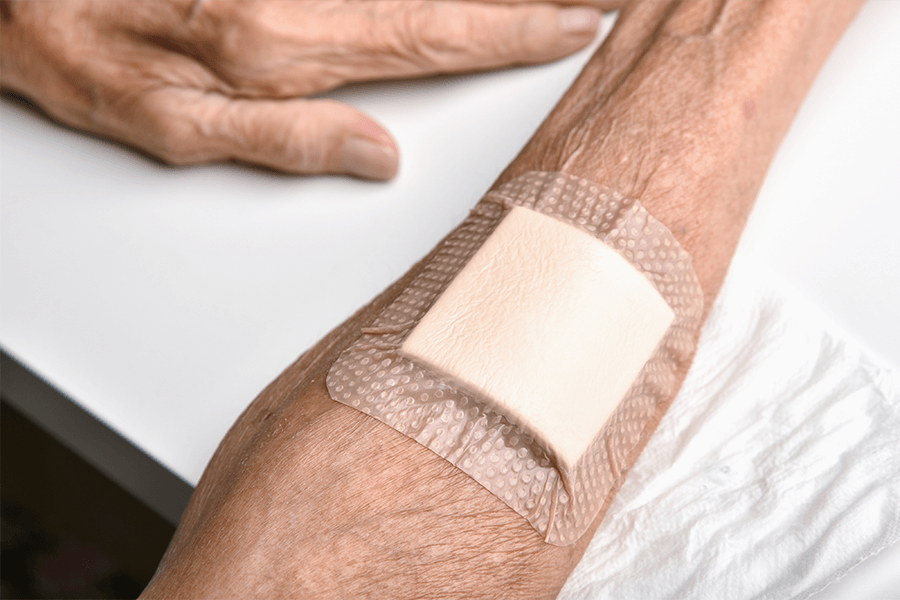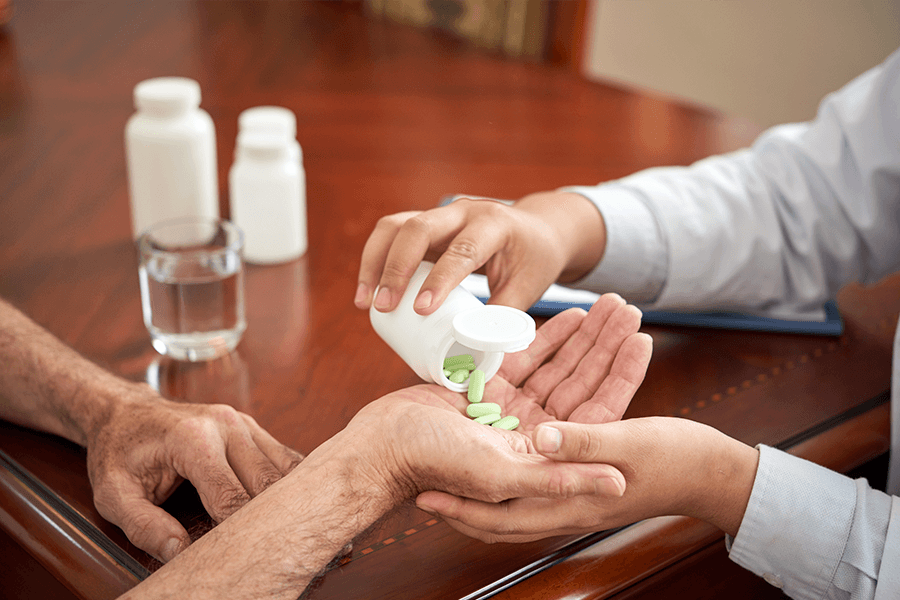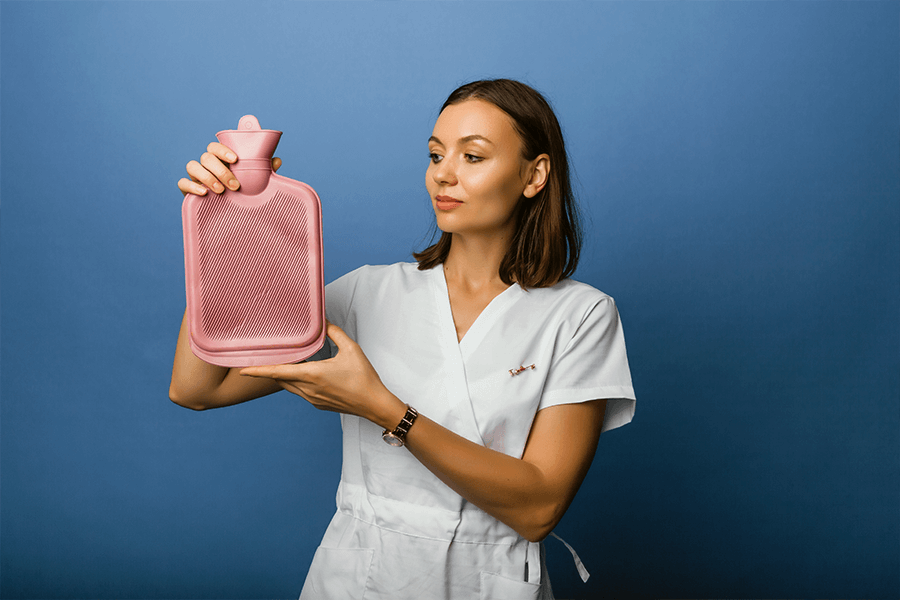What to expect as a home health aide (HHA) in 2024
THE ULTIMATE HHA JOB DESCRIPTION
Finding a good home health aide (HHA) job description can be extremely difficult!
Duties of a Home Health Aide
The best way to be successful as a home health aide is by thoroughly understanding what you are responsible for once you enter a patient with all the necessary medical supplies you have with you, ready to help them however they require you.
Regardless of what may happen, under no circumstances should you ever feel stymied in your duties to help. You’ve worked hard to get the HHA job and want to feel comfortable and confident in all your home health aide duties.

Keep in mind that you learned all of these skills in your HHA training and demonstrated your knowledge of them when you successfully passed the exam so you’re not going in cold turkey!
What’s The Purpose of a Home Health Aide Job Description?
There are many misconceptions about what a HHA actually does.
Home health aides take care of clients (sometimes referred to as patients) who may be afflicted with an illness and/or disability; clients may also be the elderly who may need care – but in all these cases the clients are in their homes.
The job description, developed by the employer (usually the home health agency), briefly outlining the duties and responsibilities.
For example, if it left off the fact that you need to change soiled bed sheets and day one you find yourself having to perform this task, it may be a bit unsettling; if it was on the job description then you would have known what to expect. Did you know about why HHA’s cannot give insulin or the procedure to change a sterile dressing?
Here are some examples of HHA job descriptions to use as a guideline!
In its simplest form the purpose of a job description is to manage your expectations as you perform your responsibilities.
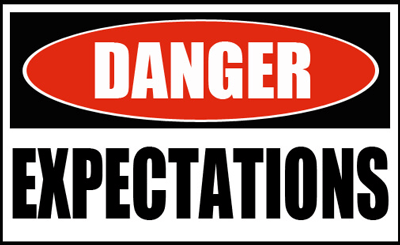
As a home health aide (HHA) you are part of the Home Care Team.
Confused About HHA Tasks?
Can a Home Health Aide Change Sterile Dressings?
Do home health aides know how to give medication?
Can a home health aide give a rectal suppository?
Can a home health aide give insulin?
Can a HHA Change a Colostomy Bag?
Why Can’t a HHA Apply a Hot Pack?
Home Care Team Members
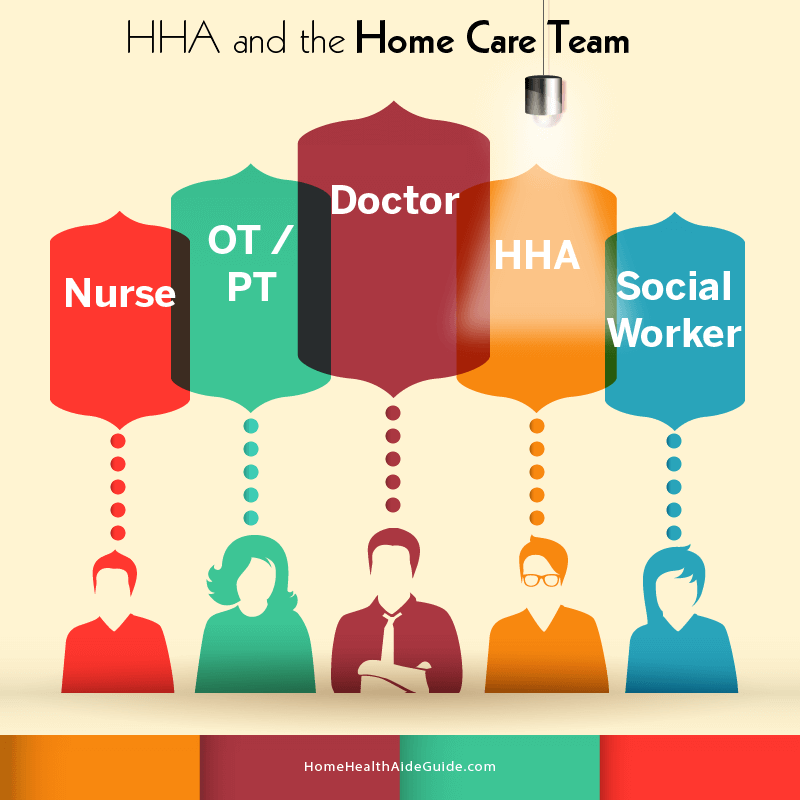
The home care team consists of various people who work together, as a team, to provide the best possible care for the client.
Members of the team include a registered home health care nurse (RN), a primary care provider, a case manager and you, the home health aide.
There may be other specialists (e.g. physical therapists, speech therapists, occupational therapists, social workers, etc.) may be involved.
And don’t forget about the client’s family members as they may also have key roles in the team because they can be caregivers themselves.
As a trained home health aide you will be under the supervision of a registered nurse (RN) though she/he will not be at the client’s home as often as you will. You take direction and guidance from the RN.
Key Members Of The Home Care Team
Home Health Care Nurse (RN)
The home health care nurse is a registered nurse. He/she handles evaluating the client and determining their specialized needs. Every person on the home care team has a role to play. The nurse is also responsible for assessing, teaching, managing resources, developing the client’s home care plan and communicating with other members of the team.
Primary care provider
The client’s primary care provider is usually a doctor; this person responsible for certifying that the client actually needs home health care services and that those services are necessary. This person is a crucial member of the team.
Physical Therapist (PT)
Physical therapists help injured or ill people improve their movement and manage their pain.
Occupational Therapists (OT)
Occupational therapists teach clients with physical and/or cognitive problems how to regain their activities of daily living to live independently. Activities include dressing, bathing and toileting, meal preparation and leisure activities.
See also becoming a HHA for a family member.
Important Components Of The HHA Job Description
Most will be divided down into five (5) sections:
- Position Summary
- HHA Responsibilities
- HHA Requirements
- Working Conditions
- Physical Demands


Position Summary
The Home Health Aide (HHA) is part of the home care team, providing personal care, and companionship to the client in their home.
The HHA will work under the direction, instruction and supervision of a Register Nurse (RN). This person will be responsible for observing patients, reporting these observations and documenting observations and care performed.

If you need just a one paragraph to summarize the job description this is it!
The Summary will provide, in very broad terms, what the responsibilities will be.
There will never be just a Summary alone as you really would not be provided enough information but it does give you some idea of what a home health aide does.
It’s a starting point to the question “What does a home health aide do?”
HHA Responsibilities / What Does a HHA Do?

Maintain a comfortable, safe and clean environment for patients

You most always be working in a home – usually the patient’s home (also referred to as a “client”). The patient may be in someone else’s home as well such as a daughter/son, etc. but still, a home.
This is the environment that the home care team has chosen versus an assisted living facility or a nursing home and as such it should be made as comfortable and safe as possible.
The home health aide plays a major role in this responsibility.
Examples may include picking up items on the floor, creating a safe passage to the bathroom, putting away items on the counter/stove, etc.
Provide companionship to patients

An aide may be the only person a patient sees for days and perhaps, sadly, weeks.
The HHA will listen to the patient and empathize and perhaps sympathize during these conversations. Understandably, the home aide is certainly not a social worker and no advice or guidance should be dispensed but simply listening to a patient may be the best medicine she/he needs that day.
Dress patients; needs vary from minimal assistance to totally dependent

Most people take for granted pulling up their pants or buttoning a shirt.
Those who are home bound and need the assistance of a home health aide may need help with these “simple” tasks.
Home health aides have learned, as part of their training, how to perform such tasks as dressing a patient whether helping them lift an arm back to put on a shirt or tie their shoes.
A HHA takes great satisfaction in helping patients and getting them dressed is one of the basic tasks performed.
Bathe patients: bed baths, tub baths or showers

A home health aide should, depending on the ability of the patient, encourage the client to bathe as often as possible.
The patient may be able to do some of this and the HHA provides the rest.
Most people will not need to bathe or shower each day though the HHA needs to make sure hands, face, and private areas are washed daily. You will need to consult the nurse on the home care team if the patient puts up a fuss about bathing.
The daily schedule created by the home care team will have the specifics along with a schedule.
Recapping some bathing skills learned at home health aide training:
- Prepare: have all supplies ready before the bath
- Warmth: keep the room comfortably warm
- Respect: privacy should be highly respected; cover patient when possible
- Suit Up: wear [latex] gloves as contact with bodily fluids and/or feces is inevitable
Toilet patients and assist with bedpans and urinals; may also help transport patients to the bathroom

A patient in the care of a home health aide may need to use a bedpan (or urinal) because she/he cannot get to the bathroom easily.
Patients should urinate regularly and have bowel movements.
Certainly, most patients will be elderly and there may be just a short warning from her/him of the urge to urinate. You need to be aware of the signs of the patient and act quickly yet calmly and help the patient.
Home health aides who see the same patients on a regular basis will develop a keen sense of when the need arises and will soon fit into a routine.
Make beds and change linens

Making/changing beds is pretty routine for home care aides and a skill set learned in training.
Many times, however, patients will not be in an actual bed but be more comfortable in a chair, couch, etc. take direction, as always, from the Registered Nurse.
Ensure that non-ambulatory patients are turned regularly, to ensure comfort and prevent bedsores

Home health aides learn in training that bedsores are much easier to prevent than to treat and much time was spent on this – hopefully!
A plan of action should be developed between the home health aide, RN and the patient – every circumstance is unique.
Changing positions is key to preventing pressure sores. In general, changes should be frequent. Proper techniques must be learned.
Provide emotional support to patients and / or family members

Home health aides help the patients with activities of daily living at home but they also provide valuable emotional support.
They are not social workers – these folks are more qualified and certified to handle complex issues.
Many times a home health aide can also be a health coach taking on additional role in the overall health of the patient. This requires a bit more training but it is a growing trend in home care.
Folks needing help at home often face emotional and spiritual distress. They need time to become adjusted to their physical limitations and they may worry about their loved ones.
If something arises from these conversations that concerns you (e.g. patient wants harm her/himself, talk of severe depression, etc.) then alert your RN immediately.
Administer medication as directed by nurse or physician

Here’s a tricky one… as it all depends.
Depends on what?
Some states have different requirements for home aides to administer medications; aides need to understand the rules and the best resource is, once again, the RN assigned to the patient’s home care team.
Usually, the home aide can help the patient “self-administer”; examples include uncapping a medicine bottle, taking a tube of cream out of the box, handing the patient her/his prescription medicine, etc.
Home health aides can remind the person when to take the prescribed medications but cannot administer them. They cannot give a tubal feeding either.
Record patient vital signs

Home health aides are on the “front line”, so-to-speak.
They are the first ones, usually, seeing the patient each day and observe changes to the overall health and well-being of the patient.
One of the ways they measure this is by taking and documenting vital signs.
Vital signs include:
- Temperature (body)
- Pulse (measures heart rate) rate
- Respiration (rate of breathing)
- Blood pressure
Accurate and detailed documentation and record-keeping are crucial.
HHA’s document these vital signs at particular times usually set by the RN. If there are significant variations in any of the vital signs then medical team needs to be notified; the HHA is not responsible for treating any changes in the vital signs.
Provide catheter care; empty and record intake / output

If the patient has a urinary drainage bag then measurements need to be taken as directed by the RN.
Measurements are to be recorded on the documentation forms provided. Urine measurements are always in cc’s (much more accurate than ounces).
This is one of the more important measures: if the patient has had more intake than output then this could be a serious condition and if the patient has had more output than intake this could be the result of dehydration.
Report all changes of a patient (physical and/or mental)

The home health aide will be responsible for notifying the nurse about any changes to a client.
These observations will be part of the “big picture” of the care the patient receives.
Example of things you will be reporting on:
- observations
- daily measurements
- you may be ordered to record your client’s:
- vital signs
- weight
- intake and output
- you may be ordered to record your client’s:
- blood sugar level
- safety issues
- client statements & complaints
- unusual events
The health aide will not report these freely on a notepad: there will be forms provided by your employer on exactly what to fill out, how and when.
Questions about the form(s)? Ask the home care nurse right away!
Complete daily documentation on the care provided to each patient, accurately and completely, in the appropriate format/forms

What makes fantastic documentation on the care being provided?
- Completion
- Documentation should be thorough and adhere to the rules and procedures of the home health agency
- Consistency
- The documentation needs to be consistent if proper medical terms and abbreviations are used; adhere to the plan determined for the patient; and the RN is told immediately of changes in the condition of the patient
- Legibility
- If the only person who can’t read what has been documented then, really, what’s the point? The purpose of documentation is to communicate.
- Accuracy Counts
- Home health aides need to get it right and get it right the first time. Proper use of medical terms, correct spelling and keeping to the facts will ensure accuracy.
- Timely
- Proper documentation should be recorded as it happens. Waiting at the end of the shift or the next day is just not acceptable.
- Home health aides are required to write down information as it happens and turn the forms in when they are due as determined by the agency. No exceptions.
HHA Requirements

High school graduate (or GED) preferable

One of the many great things about being a home health aide is that there are not that many obstacles to getting trained and finding a job.
They call this low “barriers-to-entry” – meaning there are few things to get in your way of landing a job as a HHA!
No extensive training, no apprenticeship, no college degree, etc.
But… there has to be some limits… and HHA’s will need a high school diploma or a GED (“Graduate Equivalency Degree” which is a substitute for a high school diploma).
This is only an upside, though, as getting that high school diploma which not only helps with the home health aide career but also anything else the person wants to do.
There are very few jobs in the US that do not have such a requirement.
Besides, if you want to advance to any level in the medical profession then the HHA minimal education requirements will be a high school diploma.
There is absolutely no downside or disadvantage to getting a high school diploma. Period.
Successful completion of approved training program

The completion of a training programs may vary by state.
If the state in which the home health aide is working requires this then chances are the training is performed by a licensed RN.
Pretty much the standard in the industry is that HHA’s need training and to pass a competency test in order to work with patients in their homes.
Since most HHA’s work for an agency, this is where you will be afforded the training (and in many cases free training). The home health agency will be the best source of information such as training requirements and testing.
These agencies will offer the required training and the testing (written and hands-on skills testing) in order for the potential HHA to be considered for employment.
Current HHA license, in good standing with the State licensing board

Quite simple: if the home health aide will be working for a home health agency that will receive Medicare reimbursement from administering assistance to patients then the HHA needs to be certified; this is the normal case.
HHA training consists of at least seventy-five (75) hours of training and hands-on skills; many states have the minimum at one-hundred-twenty (120) hours.
And, of course, the candidate must pass the required testing as determined by the respective state.
At least eighteen (18) years old

Most job descriptions will have this; can’t imagine that a home health agency would hire anyone under the age of eighteen (18).
Able to read and write consistent with job requirements; cognitive skills as related to the position

Certainly, reading and writing are core requirements of being a home health aide.
Working for, and assisting someone in their home, requires a great deal of documentation such as recording vital signs, filling out forms, etc.
Don’t be mislead or think this will not be a major part of the job.
Is there a language requirement for the job? Ask, as there should be no surprise the first day!
[Also, ask about the possibility of working as a bilingual home health aide – they tend to make more money as they can speak more than English (usually Spanish) and are in high demand.]Proficient interpersonal relations and communicative skills

Got a question? Have an answer?
Good communication skills are imperative.
The HHA needs to be informed of changes in the patient’s condition and overall health and she/he must keep the home medical team and family members informed of changes as well.
You will be a providing a valuable communication link with other members of the team, the agency, the doctor and RN, and the family – accurate and proficient communicative skills are vital.
Working Conditions

Working nights, weekends and holidays

Patients often need care twenty-four (24) hours a day so home health aides can expect to work days, nights, weekends and holidays.
When many of your friends and family have time off you could be working – it’s a tough trade off but think of the job you will be performing and money you’ll be making.
May performs task that are unpleasant

Sure, being a home health aide is a very rewarding profession but at times can be very… well, unpleasant.
There will be soiled bed sheets and linens, bedpans, urine measurements, etc.
Being prepared for each one of these will help minimize the unpleasantness, especially the first several times these acts are performed.
Long hours of standing

Some days may seem longer than others in the daily routine and she/he may have days when they cannot sit for hours as they tend to the patients.
This can be very physically demanding and may test the endurance of the worker; and walking will be just as demanding. You may be working in a small house but the HHA may take thousands of steps just in a shift.
[It would be interesting to wear a fitness tracker to see actually how many steps are taken!]Exposure to chemicals/diseases

Invariably, HHA’s will come into contact with household and/or medical chemicals. The entire home care team needs to identify such items and be prepared for their use.
Items should be clearly labeled if they are toxic or harmful. Work with the home care team to identify items – this will pay off later.
Have a plan in place for each one of these materials and how to use and minimize exposure.
Same for diseases: wear latex gloves and masks; wash hands often with soap and warm water (follow with a hand disinfectant).
Uncooperative patients

Patients may often be confused, suffering from dementia, stubborn and uncooperative – or all of these.
These can be daily challenges for a HHA and, if patients are such, the medical team should be informed as they may be able to offer some advice on how to best handle.
Each situation/patient is different and you need “tools in your toolbox” in order to diffuse situations and tend to the patient properly.
Physical Demands

Ability to lift at least fifty (50) pounds

A home health aide needs to be in good physical shape in order to perform her/his job and provide the best care for the patient.
Just think about it. Helping a grown person in/out of bed – imagine how much strength you will need.
Lifting a person out of bed and into a chair and back again requires great strength. Lifting 50 – 100 lbs. should be the very minimum requirement.
Enough [muscle] force to lift and carry patients

HHA’s most often perform heavy work, like lifting and moving patients, usually without help from anyone else.
While there are specific lifting techniques that can be used to minimize the load on the back, home health aides must have the strength and not create too much pressure on their own bodies.
Patient transfers are the most frequent causes of back pain and other injuries – this is followed by bathing and feeding patients.
This is a very physical job and your mind and body need to be in tip-top shape!
Good vision

It goes without say… but HHA needs good vision for both distance and close up.
The home health aide will be filling out many forms and documenting everything from urine output to blood pressure – the eyes must be in top form; and, of course, glasses and contacts can be used as needed.
Conclusion
In conclusion, it is important for home health aides to be familiar with their clients and their needs before entering their homes. By taking the time to get to know the client, the aide can ensure that they are providing the best possible care. Additionally, a home health aide should always be aware of their surroundings and be prepared to handle any situation that may arise.
By being a successful home health aide, it is important to be aware of what is expected of you when entering a patient’s home. Make sure you are fully stocked with all the necessary medical supplies before arriving to avoid any delays or complications.


